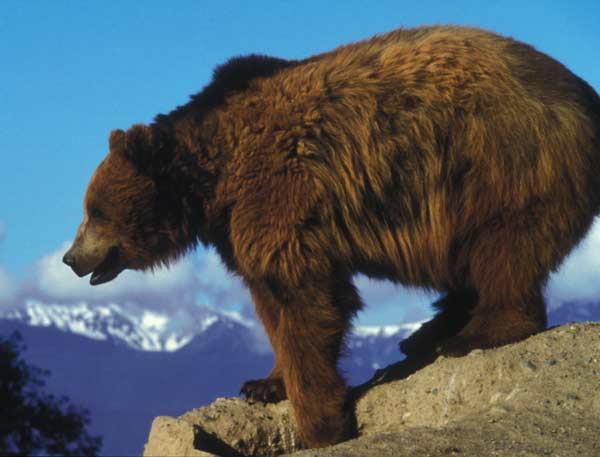
By Ruffin Prevost
CODY, WYO. — As grizzly bear populations continue to rise in the greater Yellowstone region and in other habitat areas, bear managers are sharing information about what works—and what doesn’t—in their ongoing efforts to keep both bears and people safe.
In Alberta, Canada, those efforts include using specially trained dogs to haze bears, adapting old shipping containers for use as bear-proof storage sheds and even airdropping stockpiled roadkill to the high country as a spring food source for grizzlies.
As grizzly bears multiply and disperse in Alberta, “they are spilling out onto the prairie landscape, and it’s the first time in three or four generations that people have had to deal with grizzly bears,” said biologist Jay Honeyman. “It’s causing a tremendous amount of angst in the communities.”
Honeyman, who specializes in human-bear conflict reduction for the Alberta Fish and Wildlife Division, spoke Friday in a lecture jointly sponsored by the Greater Yellowstone Coalition and the Buffalo Bill Historical Center.
Grizzly bear hunts in Alberta were suspended in 2006 and the animals were granted threatened status in 2010, Honeyman said. The area is home to an estimated 691 bears, but they will retain threatened status until the grizzly population reaches 1,000.
Female grizzlies in Alberta generally take longer to reproduce than sows in the Yellowstone area, making it tougher for Canadian populations to rebound, Honeyman said. That means it is especially important to avoid euthanizing or relocating a productive sow.
So Alberta wildlife officials have focused on a range of techniques to avoid conflicts in more populated areas and agricultural zones, he said.
During the winter, roadkill in southern Alberta’s ag regions is placed in special containers to be collected and stored until spring. Each March, helicopters fly the roadkill into the high country where bears completing hibernation feed on it. The idea is to keep grizzlies in alpine regions during the domestic livestock calving periods, Honeyman said.
“The carcass distribution program seems to have, for the most part, stopped grizzly depredation on calving,” he said.
Alberta bear managers also use three specially trained dogs to haze problem bears away from populated areas. The Karelian bear dogs are not big, but they are fierce, barking and charging at bears to create in them an aversion to returning to a specific area or engaging in unwanted behavior.
Shipping containers used by ocean freighters to bring manufactured goods to North America are retrofitted and used as storage sheds for bear attractants, Honeyman said. For about $3,000 dollars or less, the containers can be turned into bear-proof feed or grain bins in places where there have been multiple attractant-related conflicts.
Some of the most complex and high-intensity techniques Honeyman is using are applied only around the Bow Valley community of Canmore, an Alberta city of about 12,000 that Honeyman compared to Jackson, Wyo.
“They have a fairly high tolerance level for carnivores being in the valley,” he said.
Honeyman said what works in Canada might not necessarily work around Yellowstone.
“I’m not hear to tell you guys how to manage grizzly bears,” he said.

Mark Bruscino, large carnivore manager for the Wyoming Game and Fish Department, attended Honeyman’s lecture and said later that it was good for the public to see that bear managers are communicating across regional and jurisdictional boundaries.
“People are sharing new information and techniques constantly, and if it fits with their specific needs based on the geographic region, they use it,” Bruscino said. “Everyone is looking for new and better tools.”
Contact Ruffin Prevost at 307-213-9818 or [email protected].
